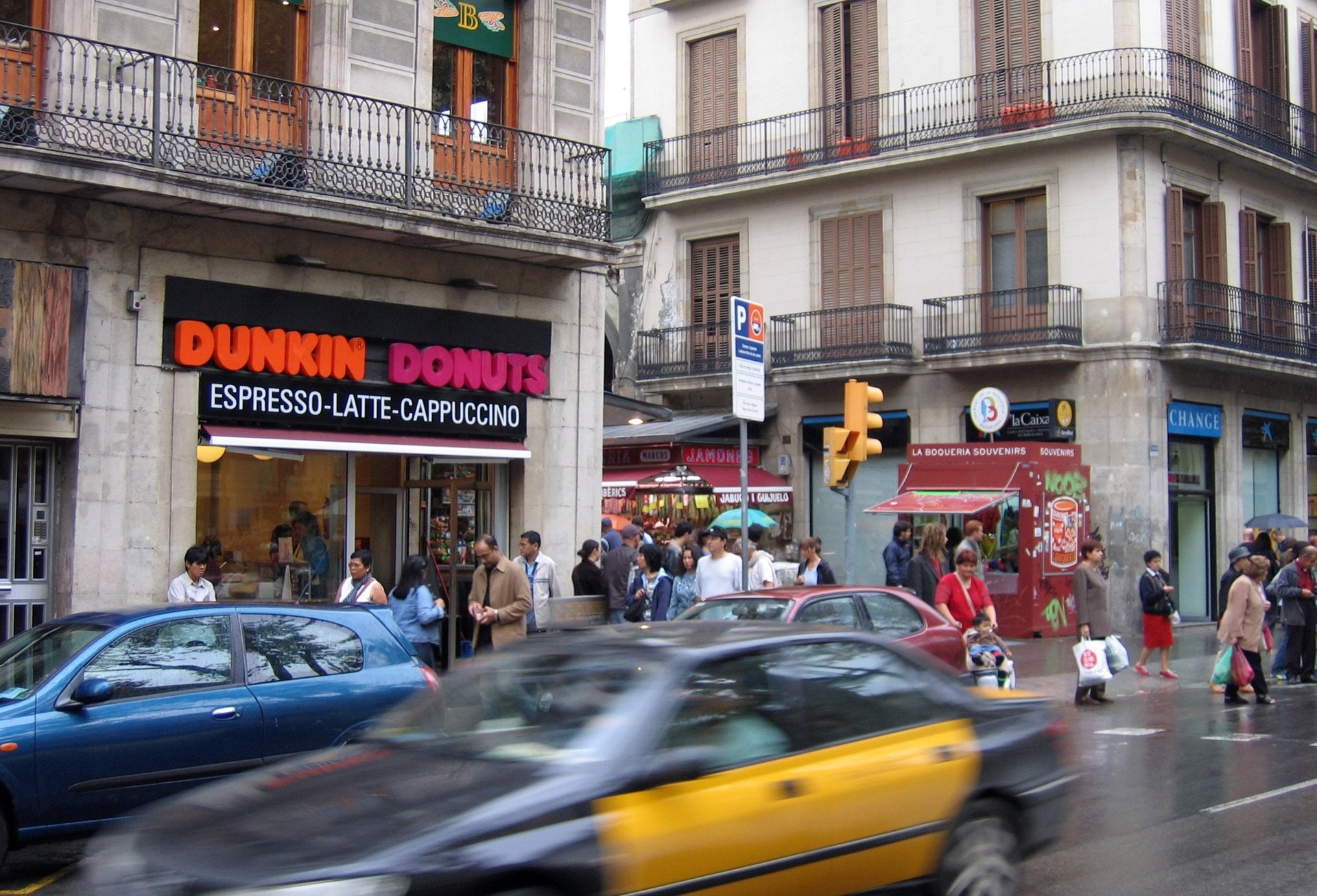Dunkin’ Donuts is in major expansion mode, domestically and abroad
“America runs on Dunkin'” is one of the least-true marketing slogans in history. Some 64 years after its founding in Massachusetts, the Dunkin’ Donuts chain—which gets about 20% of its revenue from outside its home country, mind you—hasn’t even set foot in several US states stretching from the Pacific Northwest to the Upper Midwest, and barely has a presence in important US markets like California and Texas.


“America runs on Dunkin'” is one of the least-true marketing slogans in history. Some 64 years after its founding in Massachusetts, the Dunkin’ Donuts chain—which gets about 20% of its revenue from outside its home country, mind you—hasn’t even set foot in several US states stretching from the Pacific Northwest to the Upper Midwest, and barely has a presence in important US markets like California and Texas.
The strange expansion pattern means the Dunkin’ Donuts brand is still heavily identified with the US Northeast. And while the supremacy of iced coffee there has given the chain a huge trend to tap into—any time of year—Dunkin’ can’t survive on the irrational preferences of New Englanders alone. That’s why the chain is making major efforts to expand nationally and internationally in 2015. And it’s doing so even where it means deviating from its well-worn menu of pastries and caffeinated beverages—in some cases, radically rebranding the whole Dunkin’ Donuts concept according to the locale.
Despite recent misses (paywall) against sales forecasts, Nigel Travis, CEO of Dunkin’ Brands (the parent company of Dunkin’ Donuts and the Baskin Robbins ice cream chain) has been optimistic on earnings calls and in press interviews about long-term growth built on new products and new locations around the world. Right now there are more than 11,000 Dunkin’ Donuts shops in 33 countries. Travis has said he eventually wants 17,000 in the US alone, and 30,000 outlets total (including Baskin Robbins locations) around the world.
Specifically, he wants 200 Dunkin’ Donuts in the state of California by 2020, where the first two full-service Dunkin’ Donuts restaurants opened in September of this year. In the UK, where Dunkin’ franchising failed in the 1990s, a handful of locations launched in 2014, and Travis wants at least 100 more there by 2020. Same goes for Brazil, where Dunkin’ shut down in 2005 but will return to in 2015.
In some places, like South Korea, the chain has done well by playing the ”exotic, somewhat high-brow Western donut shop” role. However, as the coffee craze has taken hold in Asia, with Starbucks and other competitors flooding the market, the novelty of the Dunkin’ shops may soon wear off in South Korea. This market actually dragged down sales for Dunkin’ Brands in the third quarter, and a handful of South Korean Dunkin’ Donuts stores closed.
The key to planting successful Dunkin’ franchises around the globe, executives are figuring, might have something to do with reinventing the brand in each country. As Bloomberg Businessweek reported when the first Dunkin’ Donuts opened in Sweden this month, that might mean selling donuts decorated with the Swedish flag, or donuts filled with Nutella, or serving food on ceramic plates instead of grab-and-go style. Or, it might mean ditching donuts in favor of veggie burgers and chicken patties—because in India, for example, many people “just don’t like doughnuts,” (paywall) the Wall Street Journal reported in November.
The top image in this post was taken by Jef Nickerson and shared under a Creative Commons license on Flickr.